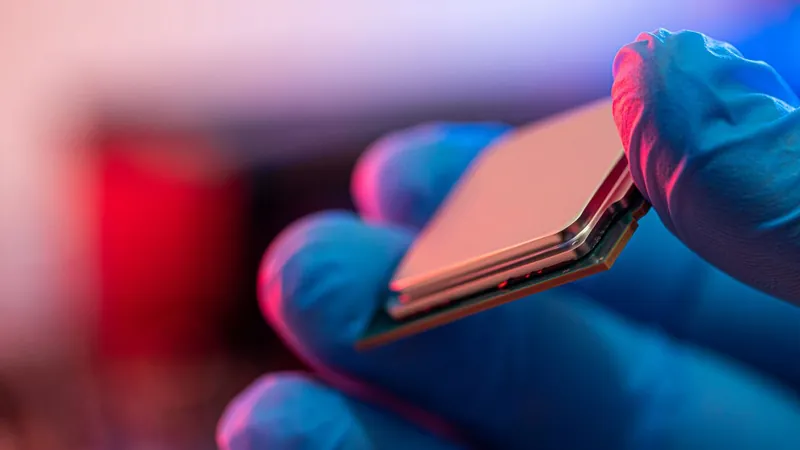
Revolutionary 2D Transistor from China Paves the Way for Ultra-Fast Processors
2025-03-24
Author: Daniel
In a groundbreaking advancement, researchers from China have unveiled a new type of silicon-free transistor that promises to dramatically enhance computing performance while simultaneously slashing energy consumption. This development is set to trailblaze a new path in the field of transistor technology.
The innovative transistor could potentially be incorporated into next-generation chips, enabling them to operate up to 40% faster than the most advanced silicon processors currently available from leading U.S. manufacturers like Intel. Remarkably, despite this significant boost in performance, these chips are projected to consume 10% less power than their silicon counterparts. This promising research was detailed in a study published in the prestigious journal Nature on February 13th.
Hailin Peng, the lead author of the study and a chemistry professor at Peking University, emphasized the significance of this innovation, stating that while improvements based on existing materials might be seen as a "shortcut," the transition to 2D materials like bismuth oxyselenide is a transformative shift.
Introducing the Gate-All-Around Field-Effect Transistor (GAAFET)
At the core of this technology is the gate-all-around field-effect transistor (GAAFET), which represents a significant departure from traditional transistor designs, such as the fin field-effect transistor (FinFET). The GAAFET design wraps the gate around the source on all four sides, enhancing control over the current flow and reducing energy loss due to static electricity discharges.
Transistors, fundamental components in nearly all electronic devices, function as switches that control the flow of current. The superior design of the GAAFET allows for enhanced electrostatic control, resulting in quicker switching times and higher drive currents.
While the GAAFET concept is not entirely new, the PKU research team has made waves by utilizing bismuth oxyselenide as a semiconductor in their transistors, achieving a breakthrough with an "atomically-thin" 2D design. Unlike standard silicon, 2D bismuth transistors boast greater flexibility and resilience, making them more practical for a range of applications.
Bismuth is particularly advantageous due to its superior carrier mobility, allowing electrons to traverse the material more swiftly when subjected to an electrical field. Furthermore, its high dielectric constant enhances the energy-storing capacity of the transistors, thus contributing to their overall efficiency.
What's Next?
As the demand for faster, more efficient processors grows in our increasingly digital world, this innovative approach could redefine industry standards. Experts predict that these revolutionary 2D transistors have the potential to power not only personal computers but also artificial intelligence systems, mobile devices, and data centers, addressing the relentless need for speed and efficiency in technology.
The implications of this advancement extend far beyond performance—they could spark a new era in semiconductor manufacturing, challenging the dominance of traditional silicon-based technologies. Stay tuned for more updates as this exciting research unfolds!




 Brasil (PT)
Brasil (PT)
 Canada (EN)
Canada (EN)
 Chile (ES)
Chile (ES)
 Česko (CS)
Česko (CS)
 대한민국 (KO)
대한민국 (KO)
 España (ES)
España (ES)
 France (FR)
France (FR)
 Hong Kong (EN)
Hong Kong (EN)
 Italia (IT)
Italia (IT)
 日本 (JA)
日本 (JA)
 Magyarország (HU)
Magyarország (HU)
 Norge (NO)
Norge (NO)
 Polska (PL)
Polska (PL)
 Schweiz (DE)
Schweiz (DE)
 Singapore (EN)
Singapore (EN)
 Sverige (SV)
Sverige (SV)
 Suomi (FI)
Suomi (FI)
 Türkiye (TR)
Türkiye (TR)
 الإمارات العربية المتحدة (AR)
الإمارات العربية المتحدة (AR)